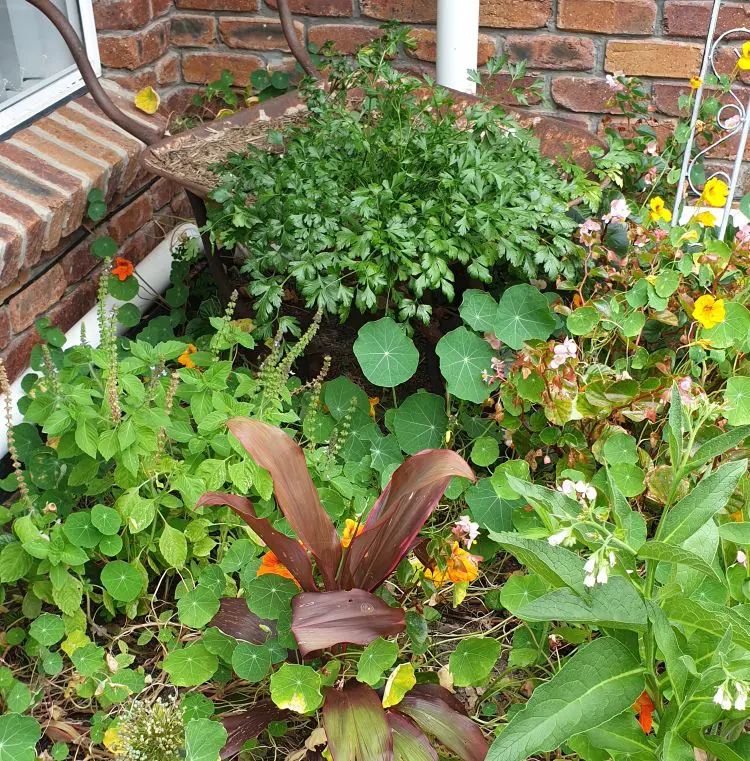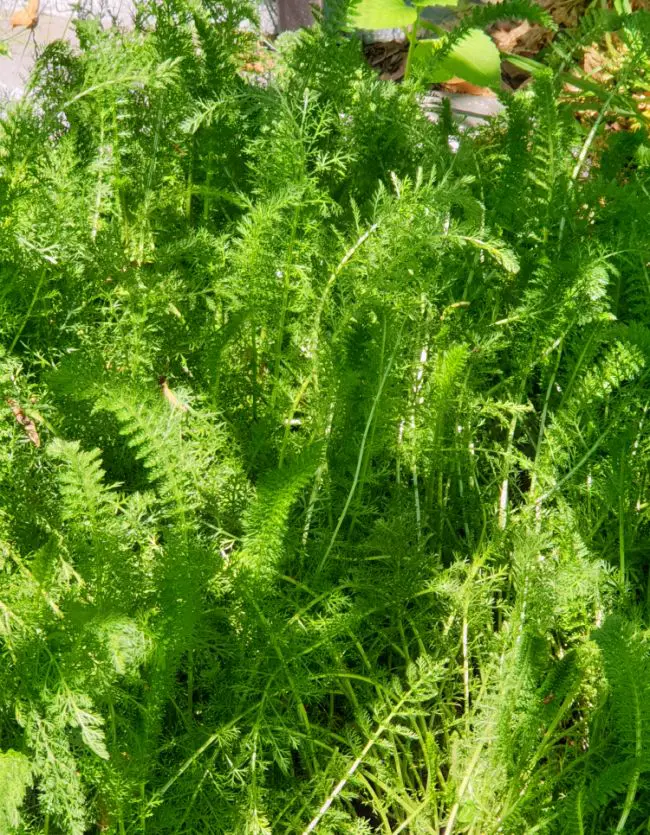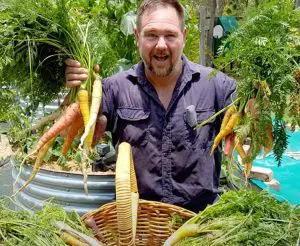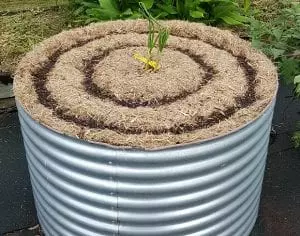Whether you have a small courtyard, a suburban backyard or an acreage, we all have shady spots in our gardens. Sometimes it’s up next to the house, sometimes under a tree. Shade can occur along a fenceline or in a far-flung corner. In order to make the best use of your space, you need to know what will grow successfully in the shade.

But did you know there are different types of shade? And that shade varies between climates? Yes really! So there’s no one-size-fits-all answer to the question ‘what can I grow in the shade?’….we need to have a closer look at what shade is all about.
In vegetable gardening, six hours of sunlight exposure is considered the cut-off point between sun and shade. Any location that gets less than 6 hours of full and direct sunlight is considered shady. Shady areas can be particularly difficult to deal with when it comes to growing edibles. But with an understanding of your specific conditions and a few tips & tricks, you’ll be able to maximise the productivity of your growing spaces.
Types of Shade
Gaining an understanding of the levels of shade and how shade changes through the hours of the day & days of the year is an important part of gardening success.
- Full shade– also called dense shade and deep shade. Full shade areas receive no direct sun light at all.
- Part shade– also called partial shade and semi-shade. These areas get 3 to 6 hours of direct sun per day, and are shaded the rest of the time,
- Dappled shade– similar to part shade but not the same. Dappled shade occurs when direct sunlight is filtered through the branches of trees overhead. It is a more gentle than part shade. This is the preferred light conditions for understorey plants.
- Full sun– is as the name suggests. In gardening terms this means six hours of full direct sun per day. There may be some periods of shade during the remaining hours of daylight.
While these are commonly accepted definitions, they are general in nature, and the way you need to define them will differ according to your climate. For example, part shade in a cool mountain climate in winter will be very different to the part shade experienced in a tropical summer. When you read that a particular plant ‘likes full sun’, remember that such general advice is usually written with a temperate climate in mind, and yours may not be that.

Tips for Shade Growing
The nature of shade will vary with the seasons. During winter, the sun sits lower in the sky during winter, the days are shorter and the sun less intense. So all levels of shade will have more light in summer than in winter. If you have plants that might suffer with the cooler weather and lower light, it may be beneficial to plant them in pots and move them around.
Coping with shade will be more difficult in cold areas than in warm climates. If you have a wall or fence by your shade garden, consider painting it white. This will help by absorbing and reflecting more light back on to your garden, and might be a quick way to increase the available amount of sunlight for your plants. You can also hang lots of little mirrors through the garden, which does the same job.
Sun-loving plants can cope with a moderate amount of shade. Many edibles can cope with some shade (see list below), but you will get a lower yield. I have an indeterminate scorpio tomato that is growing in a shade bed at my home in south-east Queensland. It only gets about 1 hour of direct sun per day and can’t enjoy any rainwater due to it’s position. Nevertheless, it is 18 months old & still flourishing. It gives me one tomato per week, fills an empty spot, and suffers far less pest damage than my tomatoes that grow in full sun.
To grow successfully in the shade, plants need more room than usual. For edibles and herbs, you’ll probably need to double the recommended spacing. Branches need to be able to spread out, so that every leaf can position itself to increase light exposure. In this way, photosynthesis, and therefore growth, is maximised.
Keep shade beds well-weeded. Weeds compete with plants for water, soil nutrients and root space. Edibles planted in the shade are already behind the 8-ball due to the reduced sunlight; if they have to compete for their other needs as well, growth will certainly suffer.
Use the best quality soil you can, and water according to the shade you have. Plants in the shade need less water and optimum nutrition, as moisture evaporates less quickly in the shade.

What Can I Grow in the Shade?
The best edible plants to grow in the shade are greens and herbs. Crops which flower & fruit like zucchini, corn, capsicum, cucumber, tomatoes and melons will be hard to grow even in part shade and will rarely cope with full shade, so it’s best to keep your sunny spots for these.
Root crops (potatoes, celeriac, carrots, beetroot) can cope with some shade, and at the onset of a very hot summer (e.g. in QLD), might do better for it. Nevertheless, you can expect a lower yield and smaller vegetables if you always grow them in part shade. Radishes will likely work well in part shade as they are such a quick crop and vigorous grower.
Peas and beans can be grown in part shade in hotter climates in winter (or in cooler climates in summer), but can quickly become pest-prone, so you need to keep a close eye on them.
Some brassicas can cope with part shade, but be mindful of how slow the growth might be in your climate. Hearting types may be impossible, but cut-and-come-again varieties like kale will be fine.

Some edibles to grow in part shade include:
arrowroot, berries, rocket, asparagus, bok choi, lettuces, celery, cabbage, horseradish, kale, leeks, spring onions, mizuna, mustard greens, sorrel, red-veined sorrel, spinach, swiss chard, tatsoi, kang kong.
Some herbs to grow in part shade are:
parsley, mushroom plant, chervil, coriander, all varieties of mint, basil, bergamot, lemon balm, tansy, borage, chicory, comfrey, land cress, watercress, dill, fennel, lemongrass, tarragon.













